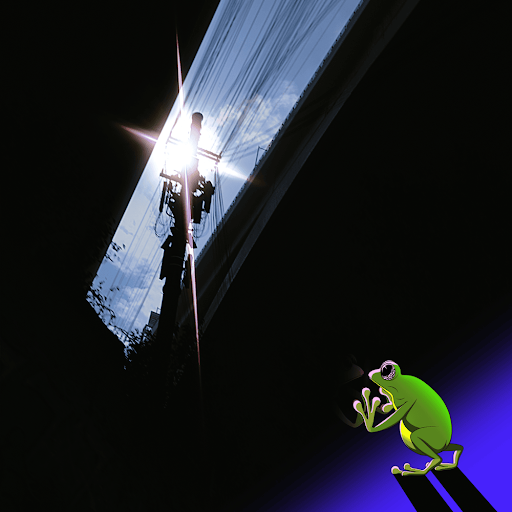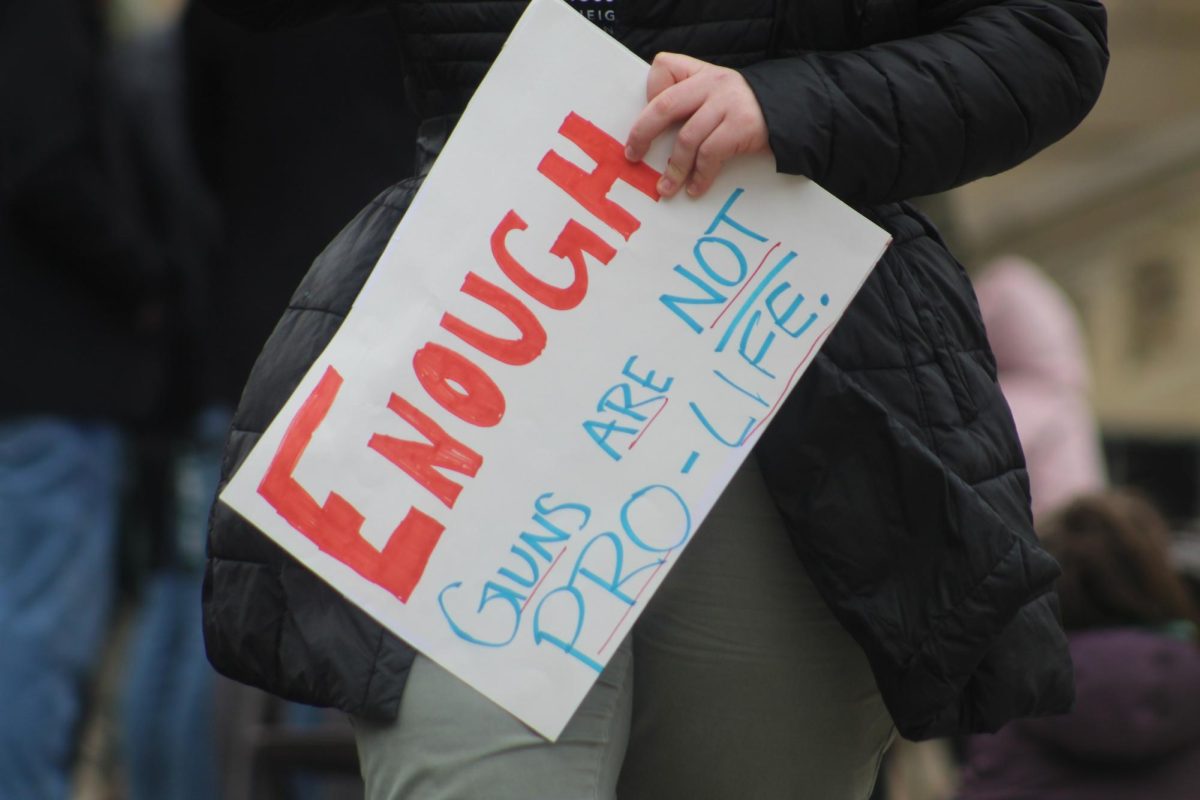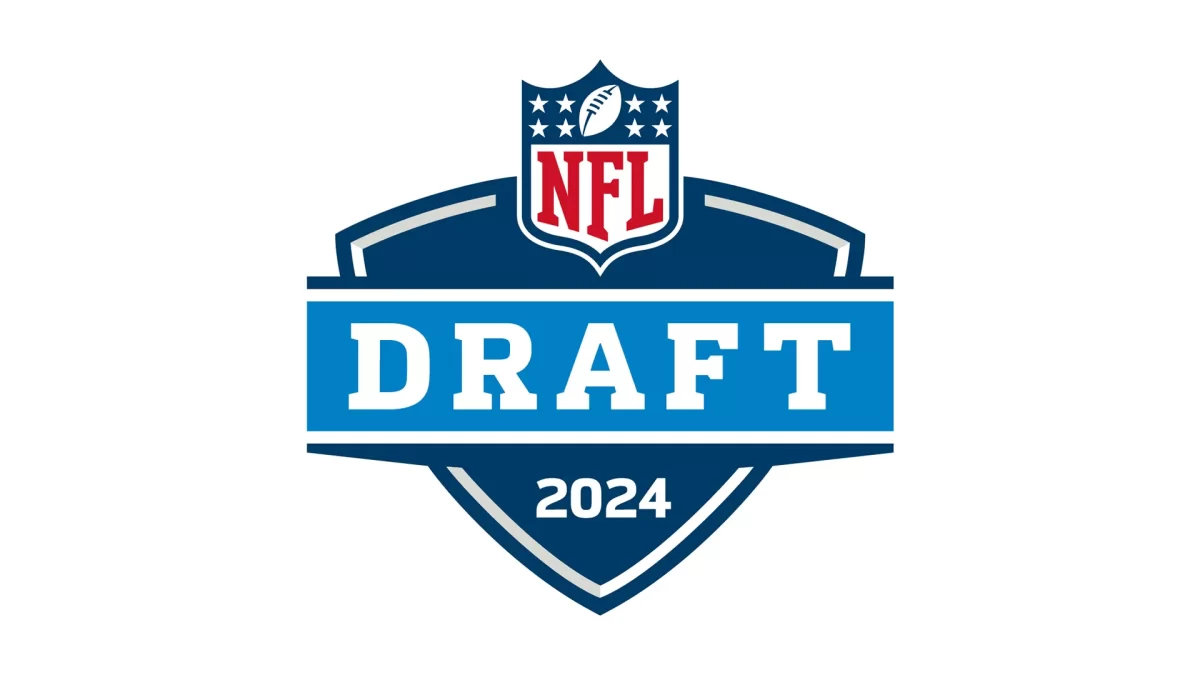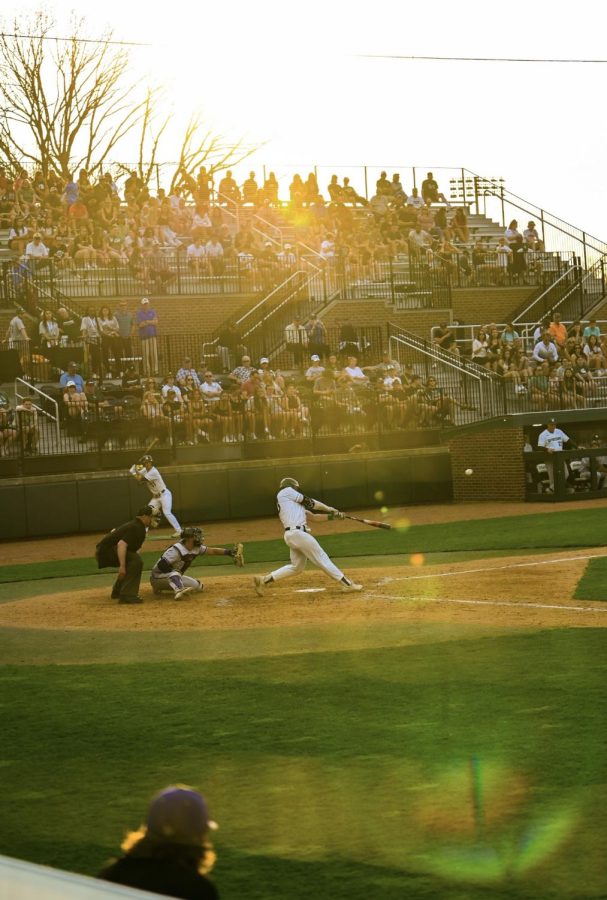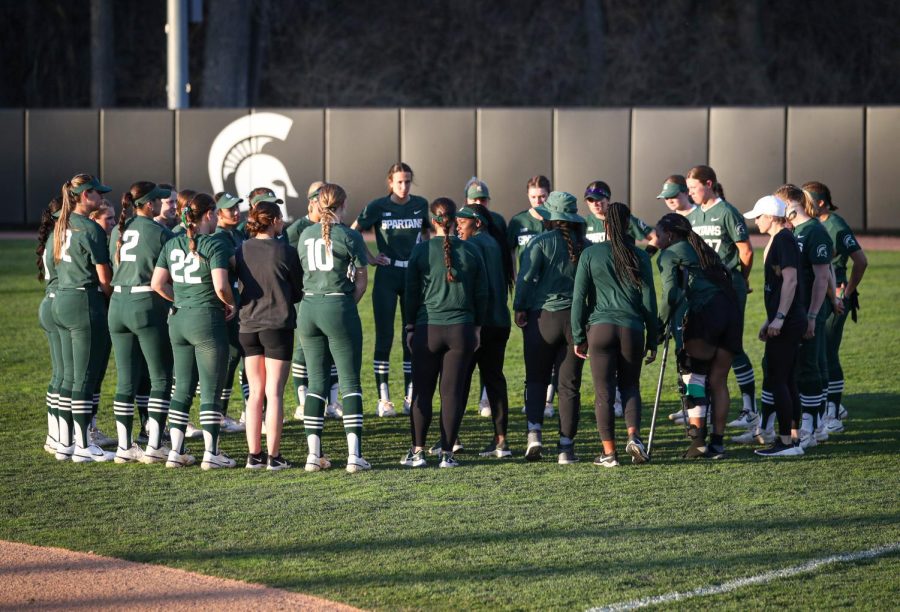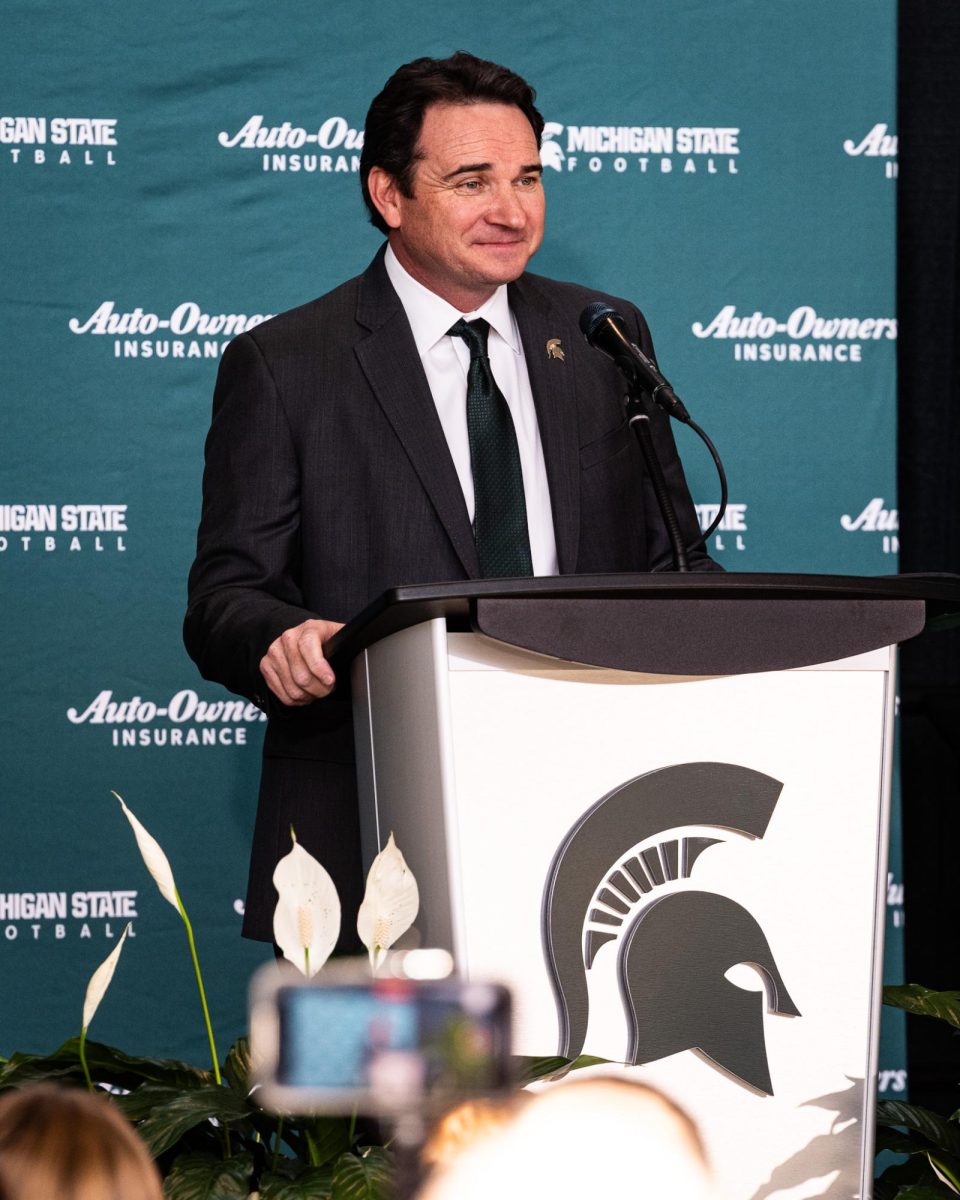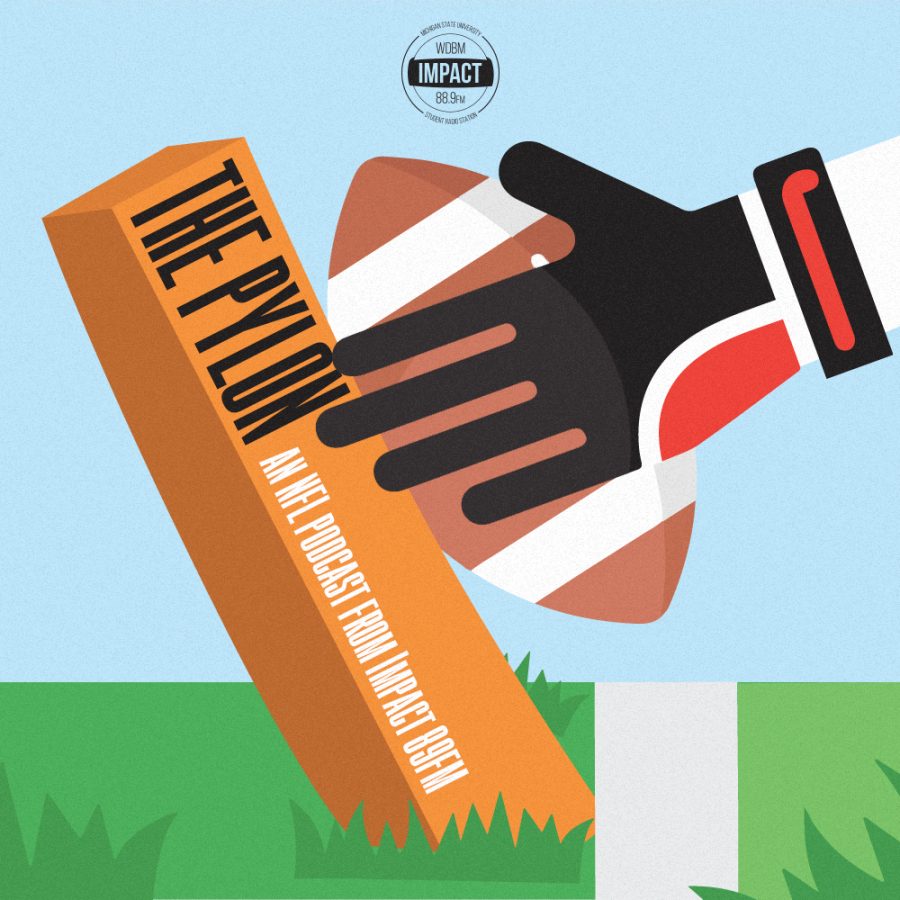Michigan State came to East Lansing for their first home game against Central Michigan on March 23 after a long road trip down south (often what northern teams must do while waiting for the snow to melt) on which they posted a 14-3 record. From there, things kept going the Spartans’ way. By April 20, MSU had achieved a 12-5 record since returning and a 26-8 record overall with the top spot in the Big Ten. They also won each of their first three Big Ten series.
This was shocking to both fans and experts after the previous offseason saw the Spartans lose six everyday starters and some key pitching pieces to the draft and graduation. They put up ridiculous hitting numbers, scoring over 6 runs in 11 of their first 17 games, while competing down south.
This offensive success was not without question though. One could argue Michigan State was not facing top-tier pitching. Some of the pitching staffs they faced were among the worst in the country, including a pair of the Big Ten opponents in Purdue (202nd in the nation in ERA) and Rutgers (169th in the nation in ERA). MSU was taking advantage of these weak staffs and essentially their stats were inflated to start the year.
Once MSU started taking on the Big Ten elite, reality struck. They were overmatched by stronger arms and were not able to pour on hits like they once had. It wasn’t a secret this team hit a wall, and players and coaches would openly talk about their struggles at the plate and to win games as they collectively tried to figure out what was going wrong and what had changed since the success down south.
At one point Michigan State had all of their starting nine batting over .300. They finished the season with only four guys over .300 (Brandon Hughes, Jordan Zimmerman, Dan Durkin and Dan Chmielewski). Keep in mind Chmielewski didn’t start playing until the second half of the year. It doesn’t help that three of those names were the first three hitters in the lineup. Getting production from the lineup from one through nine was a huge factor in the team’s early success. That seemed to peter away as the season went on.
This slump ultimately cost them their chances at the NCAA regionals. But how bad was the slump?
Let’s take a look at some of the more productive and key players to start the year and examine their decline as the season progressed to try to make sense of what went wrong.
I’m not trying to single these players out, but they are representative of the team product.
Brandon Hughes
Hughes was the leadoff man on the team, so it’s fitting he leads off this segment. Giving credit where credit is due, Hughes was the second-most reliable bat behind Zimmerman. It seemed like the Spartans could count on him when the team needed a hit. He also did a tremendous job driving in runs when the bottom of the order was getting on base. But he, like so many others, dipped off right as the slump hit.
Hughes’ average hit .344, his peak batting average of the season (excluding early numbers), right as Indiana came to town in late April, the weekend series that followed the Notre Dame midweek game.
Getting shut out against Notre Dame can be seen as the start of the Spartan demise. From there, it was a steady decline to his final average of .304. Not a bad average, but compared to what he can presumably do and compared to other successful college players, Hughes left much to be desired.
But that .304 average doesn’t tell the full story. The fact that he went 22-for-86, or a .256 average, from the Notre Dame game on means Hughes was one of the biggest offenders of raking against weaker pitching to start the year and just not being able to figure it out later in the season.
The fact that he only had three RBI from the Nebraska series on is an even a bigger hit on this offense. Whether the bats would show up or not was a huge issue for those final key series against Nebraska, Iowa, and Maryland. Hughes, a guy the Spartans hoped to lean on, was all of the sudden a part of the problem.
Now RBI is a tough statistic, because it is reliant on those around you. Plus, Hughes is a leadoff hitter, therefore he has less opportunities. So a lot of his decline in run production correlates with failures at the bottom of the order, which we’ll get to. Regardless, Hughes didn’t seem to give the offense a jolt at the top of the lineup as he did earlier in the year.
Marty Bechina
Bechina went from leadoff, to cleanup, all the way to the bottom third of the lineup. The freshman came out “en fuego” down south and showed great promise as a youngster. His batting average was up over .300 heading into April, tremendous for a first-year player.
Bechina actually differed from most struggling players by continuing his hot streak upon returning to East Lansing. In the 12 games spanning from Notre Dame to the last Nebraska game, he got a hit in nine of those contests. It was his final 11 games where he became less of an asset. Bechina ended the year going 5-for-37, a detrimental .135 batting average.
One could say the length of the season took a toll on the freshman, causing his bat to implode. Whatever it was, the standout freshman went from riding the hype train to the struggle bus.
Justin Hovis
The one true veteran starter for this team, Hovis was the rock out of the eight hole all year.
But the spot in front of him in the lineup was unable to establish a consistent bat. It was constantly rotating between Taylor Grace, Kris Simonton, Zack McGuire, and Chmielewski. Hitting with a runner on base helps a batter tremendously, and that wasn’t a luxury Hovis always had. To make matters worse, the nine spot was in a daily cycle of Royce Ando or Kory Young, neither of whom were a threat at the plate. So Hovis was stuck between a rock and a hard place, affecting his numbers.
His final stat line of .244, 17 runs, and 44 RBI is no doubt impressive for a player who spent his whole career battling for a starting job. But that’s not exactly what the team needed down the stretch. On top of that his 16-for-81 (.198) hitting in those 25 games after Notre Dame seem right about on pace with the rest of the team. Above all else, only seven of his 44 RBI came in those remaining games.
When the bottom of the order was producing as much as the top of the order for the Spartans, they seemed unbeatable. Players like Zimmerman, Simonton, and Matt Byars would allude to this feeling after a dominating team performance. A tsunami of hits would come at opposing pitchers, and MSU would drop six-plus runs per game. But as mentioned before, this so called “hit parade” ceased to exist in the later half of the season.
The drop off in runs
Here are the team numbers in runs per game divided into three unequal parts of the season:
In the first third, with all the series down south (17 games), the Spartans scored 121 runs for an average of 7.1 runs per game. At the time, their .333 batting average to go along with that was good enough to put them into the top ten in the nation.
During the middle 20 games, from CMU on March 23 to the last Indiana game on April 24, MSU saw a whole two runs per game drop off (5.1 rpg). This was only 101 runs in a longer span of time. The team average also dropped to .302.
In the final third, where the slump reached its climax, MSU scored only 68 runs in 19 games–exceedingly low–giving them 3.56 runs per game. The team average would also dip down to .283, but even that isn’t reflective of how poorly they were playing.
It’s true, baseball is a game of streaks, but this wasn’t hitting a rough patch in the year. This was a full blown downward spiral to end the season. The Spartans seemed so promising and it seemed that this was going to be a team that could compete with the elite in their conference and even the elite throughout the nation. But they just weren’t that.
Jake Boss Jr. has done a promising job at getting MSU baseball on the map and crafting it into notable program. The team was even ranked in the top 25 this season, a rare event for teams of the north. Although not all him, he played a huge role in breaking the record for number of Spartans drafted in last year’s MLB draft. In turn, he was left with less talent to work with for the 2016 season, but this was no excuse. He conveyed to his squad that they would need to scrap and fight for every win, and they did that.
But ultimately this inexperienced lineup was overmatched by top pitching. A classic Boss line is to “keep plugging away.” Sometimes that just wasn’t good enough, and the greater talent defeated them.
Only losing two seniors (unless more choose to enter the draft, notably starting pitcher Cam Vieaux), including one that was brand new to the program this year in Simonton, means MSU has a real chance to make bigger noise next year. Understand what went wrong this year and find a way to execute consistently down the stretch, and this team will do great things.








